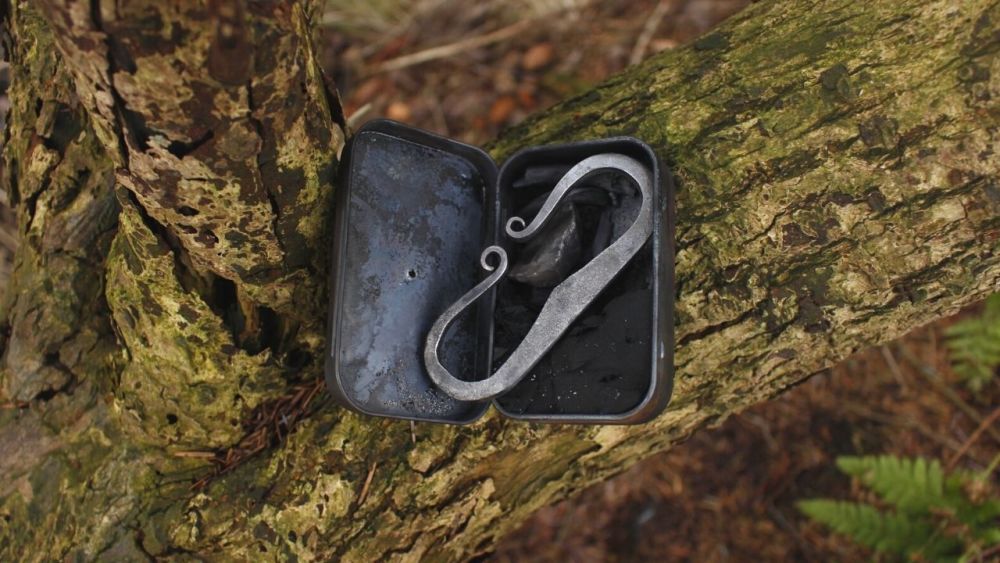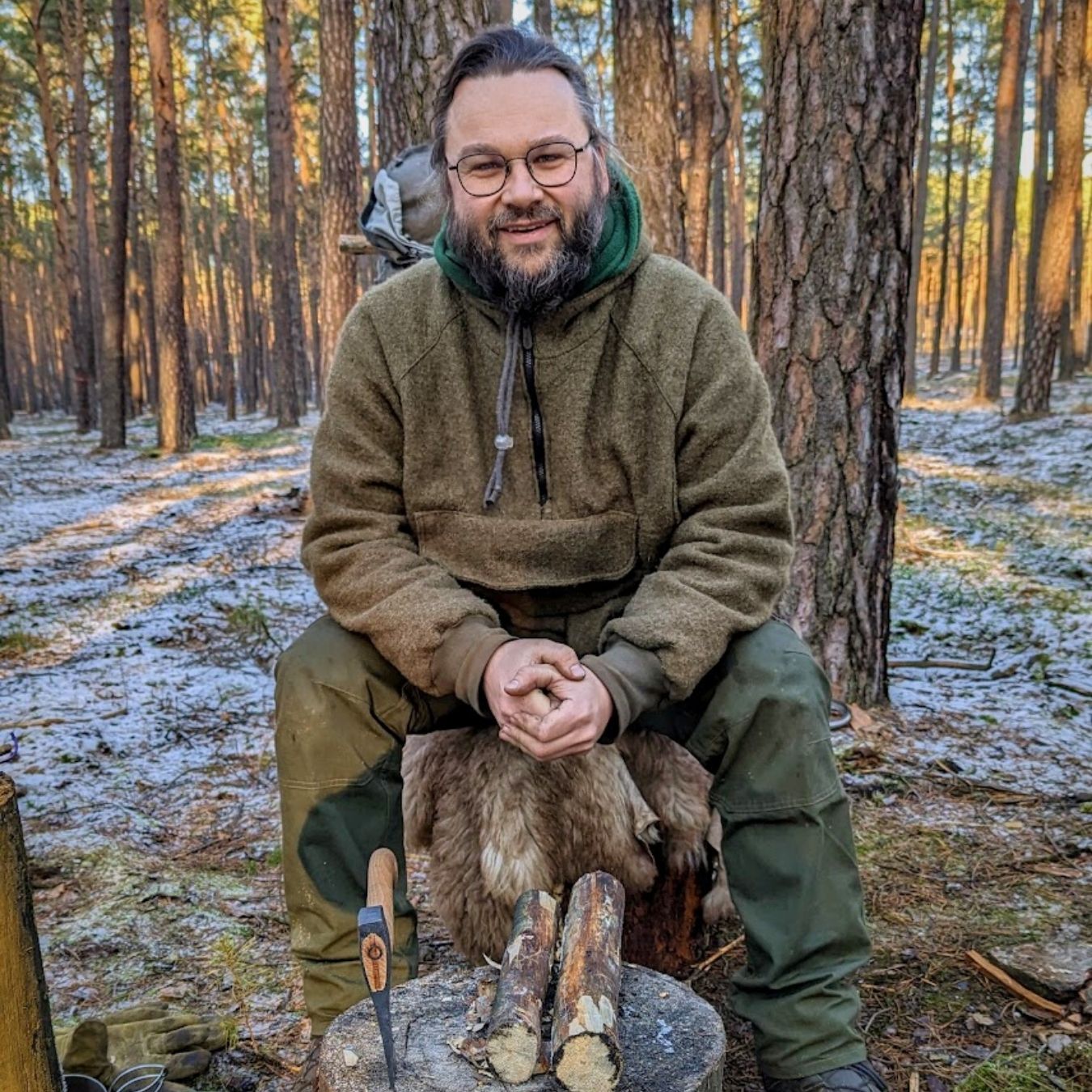
fire striking
Nomen
Meaning
Fire striking is a fundamental skill in the world of survival, bushcraft, and outdoor adventure. It refers to the technique of creating fire by striking a hard object against a piece of flint or other suitable material to produce sparks that ignite tinder. This ancient method has been used by humans for thousands of years and is still relevant today. Mastering fire striking is essential for anyone venturing into the wilderness, as fire provides warmth, light, and the ability to cook food. It is a skill that every outdoor enthusiast should learn, as it can be a lifesaver in emergency situations.

Examples
„I love going out into the wilderness and practicing bushcraft skills. One of my favorite techniques is fire striking. It's a method of starting a fire using a flint and steel.“
„When I'm out camping with my friends, we always have a friendly competition to see who can start a fire the fastest. Fire striking is my secret weapon, and I usually win!“
„Last weekend, I went on a solo camping trip and forgot to bring matches or a lighter. Luckily, I had my fire striking kit with me, and I was able to start a fire to cook my dinner.“
„I recently taught my younger brother how to fire strike. He was amazed at how a simple spark could ignite a fire. Now he's hooked on bushcraft and wants to learn more survival skills.“
„During a survival training course, our instructor showed us different fire starting methods. Fire striking was by far the most reliable and efficient method, especially in wet conditions.“
„“
Origin
The term "fire striking" originates from the practice of creating fire by striking a hard object against a piece of flint or other suitable material. This method of fire starting has been used by humans for thousands of years and is believed to have originated in the Paleolithic era.
Fire striking has its roots in the ancient technique of flint knapping, which involves shaping flint or other types of stone into sharp-edged tools. These tools were then used to strike against a piece of flint or a similar material, creating sparks that could ignite tinder and start a fire.
Over time, fire striking techniques have evolved and diversified. Different cultures around the world have developed their own variations of fire striking, using different materials and techniques. For example, the Native Americans used a method called "flint and steel," which involved striking a piece of flint against a steel striker to create sparks.
In modern times, fire striking has become a popular skill among outdoor enthusiasts, survivalists, and bushcraft practitioners. It is seen as a valuable skill to have in emergency situations or when camping in remote areas without access to matches or lighters.
Today, fire striking is often practiced using modern tools such as ferrocerium rods or firesteels, which produce a shower of sparks when struck with a hard object. These tools are lightweight, compact, and highly reliable, making them a popular choice for outdoor enthusiasts.
Synonyms
Fire making, Fire ignition, Fire lighting, Fire kindling, Fire sparking, Fire igniting, Fire starting
Antonyms
Water extinguishing, Fire suppressing, Fire quenching, Fire dousing, Fire smothering, Fire suffocating, Fire dampening, Fire snuffing
Relatives
Fire making, Fire starting, Fire building, Fire ignition, Fire lighting, Firecraft, Fire tinder, Firewood
Historical and cultural importance
Fire striking is a technique used to create fire by striking a hard object against a piece of flint or other suitable rock. This method has a long history and cultural significance, dating back thousands of years.
Fire striking has been used by various ancient civilizations and indigenous cultures around the world. It played a crucial role in their survival, providing warmth, light, and a means to cook food. The ability to create fire was a fundamental skill for early humans, allowing them to thrive in harsh environments.
In many cultures, fire striking was not only a practical skill but also held spiritual and ceremonial significance. The act of creating fire was often seen as a sacred ritual, connecting humans to the natural world and the divine. Fire was considered a symbol of life, transformation, and purification.
Fire striking techniques varied across different cultures. For example, the Native Americans used a fire striking method called "flint and steel," where a piece of flint was struck against a steel striker to create sparks. In Europe, the use of a flint and pyrite combination was common.
Today, fire striking is still practiced by survivalists, bushcraft enthusiasts, and those interested in primitive skills. It serves as a reminder of our ancestors' resourcefulness and resilience in the face of adversity. Learning this ancient technique not only provides a practical skill but also connects us to our shared human history.
More information about the term fire striking
Fire Striking: Mastering the Art of Creating Fire
Fire striking is a fundamental skill in the world of survival and bushcraft. It involves using a fire striker, also known as a ferro rod or firesteel, to create sparks that ignite tinder and ultimately start a fire. Mastering the art of fire striking is essential for anyone venturing into the wilderness, as fire provides warmth, light, and the ability to cook food.
The Basics of Fire Striking
When it comes to fire striking, preparation is key. Before attempting to strike a fire, gather your materials: a fire striker, tinder, and kindling. Tinder refers to highly flammable materials such as dry grass, birch bark, or cotton balls soaked in petroleum jelly. Kindling consists of small sticks or twigs that will catch fire easily once the tinder is ignited.
To start a fire using a fire striker, hold the striker firmly in one hand and the fire rod in the other. Position the fire rod at an angle, with the striker pressed against it. Apply pressure and quickly scrape the striker down the length of the fire rod, creating sparks that fall onto the tinder. Continue striking until the sparks ignite the tinder, then carefully transfer the burning tinder to your prepared fire pit or fire lay.
Mastering the Technique
Fire striking may seem simple, but it requires practice and technique to become proficient. Here are a few tips to help you master the art:
1. Find the right angle: Experiment with different angles between the fire striker and rod to find the one that produces the most sparks.
2. Apply the right pressure: Too much pressure can cause the striker to slip, while too little pressure may not generate enough sparks. Find the right balance for effective striking.
3. Use the right tinder: Different types of tinder have varying levels of flammability. Experiment with various materials to find what works best for you in different weather conditions.
4. Practice proper technique: Develop a smooth and controlled striking motion. Avoid jerky movements that can disrupt the spark production.
Fire Striking Safety
While fire striking is an essential survival skill, it's important to prioritize safety. Always follow these safety guidelines:
1. Choose a safe location: Clear the area around your fire pit of any flammable materials, and ensure you have enough space to work without risk of starting unintended fires.
2. Have water nearby: Keep a water source close by to extinguish the fire if it gets out of control.
3. Monitor the weather conditions: Avoid fire striking in windy conditions, as sparks can easily ignite surrounding vegetation.
4. Practice fire extinguishing techniques: Learn how to properly extinguish a fire using water, sand, or dirt.
Conclusion
Fire striking is a valuable skill for anyone interested in survival and bushcraft. By mastering the art of creating fire, you gain the ability to provide warmth, light, and sustenance in the wilderness. Remember to practice regularly, prioritize safety, and respect the power of fire.
Back to overview

